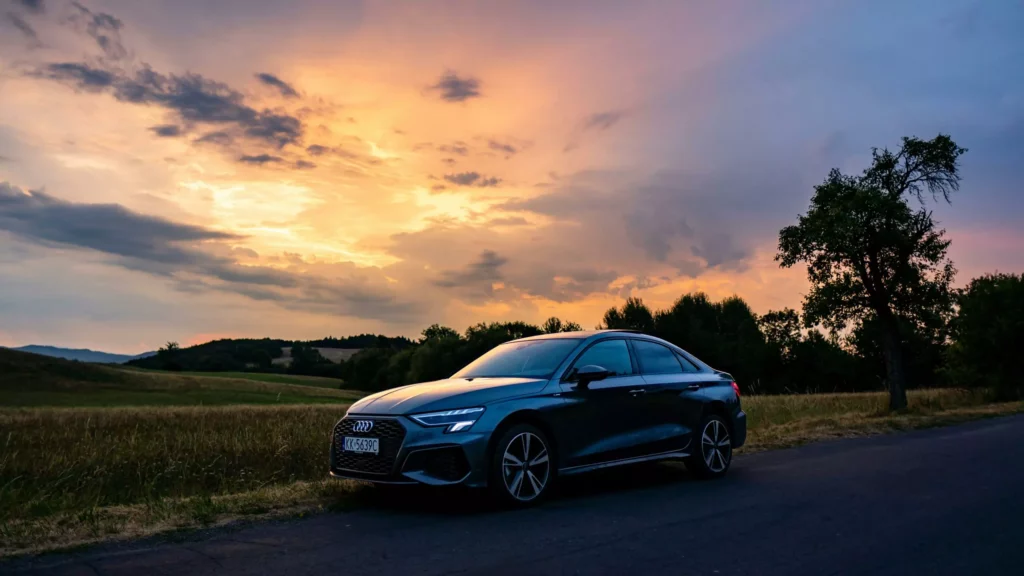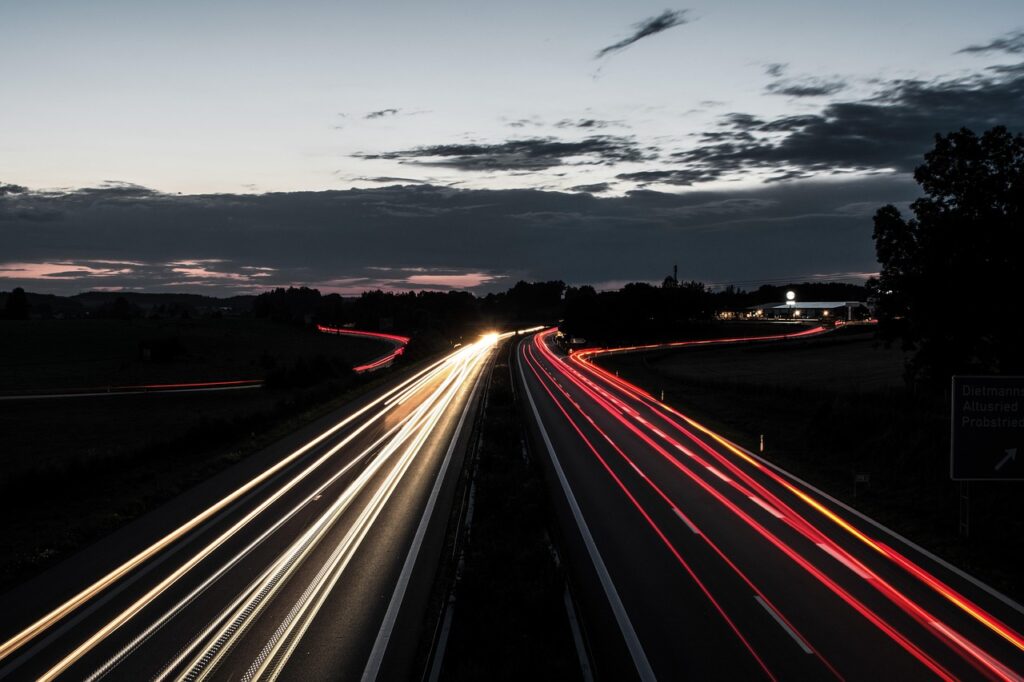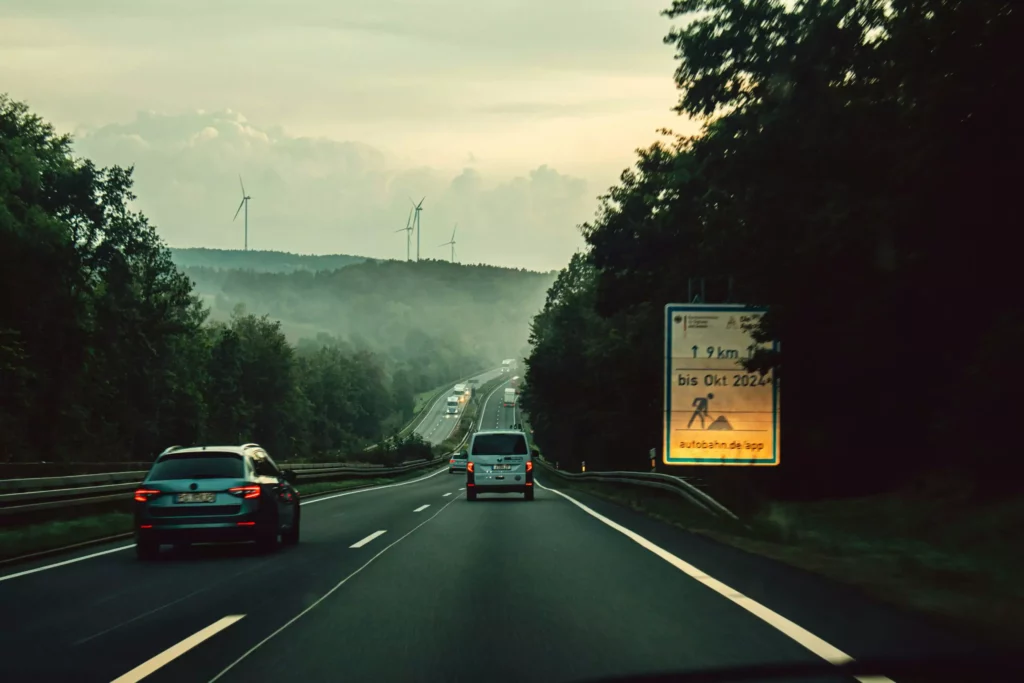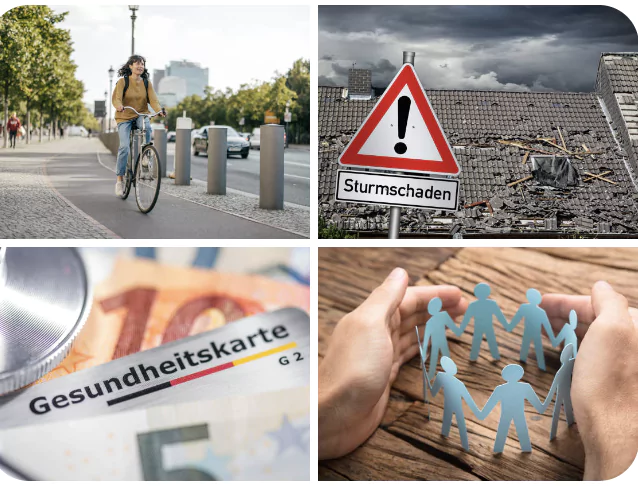
Germany is one of the best countries in Europe for a road trip. With smooth highways, fair traffic rules, and the legendary Autobahn, driving gives you freedom to explore castles, medieval towns, wine valleys, and lakes at your own pace.
Essential Rules & Documents
-
Driver’s License – EU licenses are valid. Visitors from outside the EU should carry an International Driving Permit (IDP).
-
Minimum Age – 18 years to drive. Many rental companies require drivers to be at least 21.
-
Seatbelts – Mandatory for all passengers.
-
Alcohol Limit – 0.05% BAC, stricter for new drivers under 21 (zero tolerance).
-
Phones – Hands-free only. Holding a phone while driving is illegal.

Lorem ipsum dolor sit amet, consectetuer adipiscing elit, sed diam nonummy nibh euismod tincidunt ut laoreet dolore magna aliquam erat volutpat.
How Driving in Germany Nearly Broke Me!
I thought I was ready for the Autobahn. I had my rental car, my playlist, and that feeling of “I can handle this.” Spoiler: I could not.
First came the speed. I merged into the right lane thinking I was fine at 130 km/h. A black BMW appeared in my mirror like a rocket. In two seconds it was past me, leaving me clutching the wheel like I was in Mario Kart on expert mode.
Then came the rules. Flashing lights, overtaking etiquette, speed limits that appear, disappear, then reappear. Miss one sign and you’re either holding up a line of angry Germans or paying a speeding fine that feels like highway robbery (literally).
By day two, I was drained. My shoulders were tense, my phone GPS kept shouting “recalculating,” and I had convinced myself every driver on the road hated me. Driving in Germany nearly broke me, but it also taught me the rules that actually matter, the mistakes I made, and the little hacks that saved my sanity.
tips for driving in germany
The Autobahn – Myths & Realities
Speed – Some sections have no speed limit, but the recommended speed is 130 km/h. Always check signs, as many stretches do have limits.
Left Lane – For overtaking only. Stay right unless passing.
Discipline – Strict lane discipline and signaling are expected.
Road Rules & Safety
Lights – Must be used in tunnels, and recommended in poor weather.
Right of Way – On unmarked intersections, the car coming from the right has priority.
Roundabouts – Cars inside the circle have right of way.
Winter Tires – Required in snowy/icy conditions (Oct–Apr recommended).
Environmental Zones & Stickers
Many German cities have Umweltzonen (low-emission zones).
To drive in these areas, you need a green sticker (Umweltplakette) on your car.
Rental cars usually have it, but double-check before booking.
At Wanderlab, we highlight the best places to see in Germany from world-famous cities to hidden gems, and help you build itineraries that make the most of your journey.

Germany Travel Guide
Whether you’re here for history, culture, food, or nature, Germany offers countless ways to experience its charm.
Discover Germany
Parking in Germany
Blue Zones – Use a parking disc (Parkscheibe) to show your arrival time.
Ticket Machines – Pay and display the ticket inside your car.
Park & Ride – A good option in big cities; cheaper and less stressful than downtown parking.
Tips for Renting a Car
Book early – Prices rise during holidays.
Manual cars – Most rentals are manual; request automatic if needed.
Fuel – Gasoline is called “Benzin.” Diesel is separate, double-check before refueling.
highlights for drivers
Romantic Road – A scenic drive through medieval towns like Rothenburg ob der Tauber.
Black Forest – Winding roads, dense forests, and spa towns.
Mosel Valley – River views and vineyards.
Bavarian Alps – Lakes, castles, and mountain panoramas.



